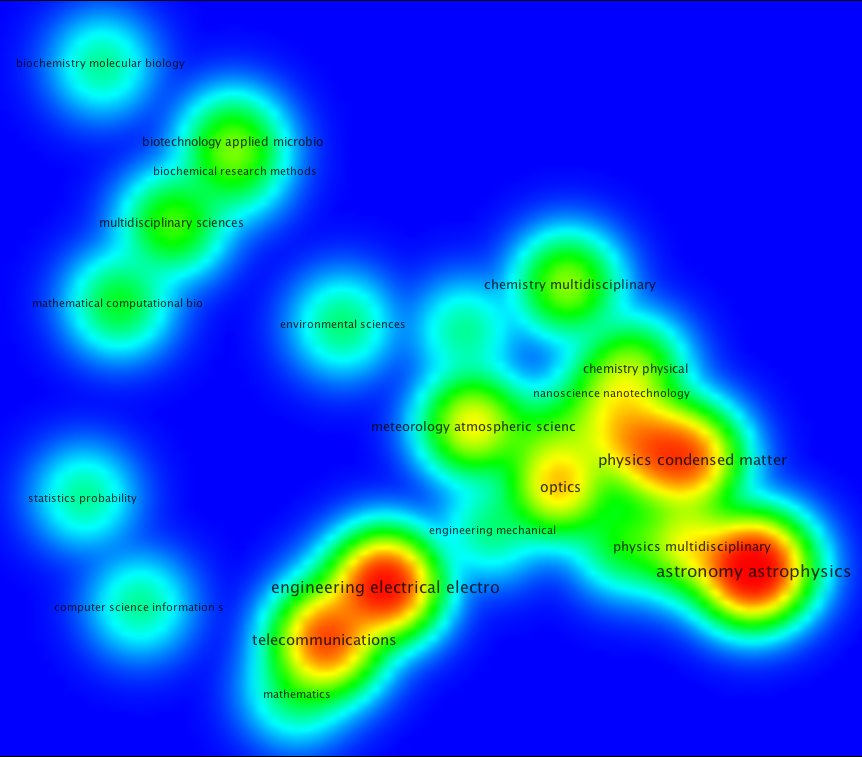Source:
http://blogs.lse.ac.uk/impactofsocialsciences/2014/06/30/open-access-citation-advantage-chalmers/
 Due
Due
to differences in citation practices amongst scientific disciplines,
existing research on a possible open access citation advantage remains
limited. A new study seeks to overcome these limitations by
investigating whether there is a possible OA citation advantage across
all fields. Lars Kullman
presents his findings on cross-field citation comparisons between OA
and non-OA articles from the Chalmers University of Technology
self-archive repository. The results indicate an advantage. The OA
articles studied in this paper have a 22% higher field normalized
citation rate than the non-OA articles.
Here is the thing. Citations have become an obsession within the
research community. And even though researchers, university
administrators, research councils and journal editors probably all agree
that citations by no means is a perfect and objective way of measuring
research quality, the system is nevertheless very much practical and
quite successful. Open Access (OA) is not about citations, nor is it
about evaluating and measuring research. OA is about making knowledge
freely available to researchers, teachers, students and the public
around the world.
Why then care about citations rates on OA articles? Because citations
are a language that researchers and university management understand.
The assumption that open access leads to increased citations is widely
spread among OA proponents. And proponents of this view have tended to
be both passionate and argumentative. But what does it look like at
Chalmers University of Technology?
Research on whether OA articles receive more citations than non-OA
articles officially traces its origins back to 2001 when Steve Lawrence
first published a paper indicating an
OA citation advantage in the field of Computer Science.
Since then numerous of studies have been made on the subject. The
explanations from previous studies of an OA citation advantage can be
summarized as: (1) A general OA advantage: more scholars have access to
papers and these therefore receive more citations. (2) An early
advantage: the earlier a paper is made available, the earlier it can
start accumulating citations. (3) A selection bias / quality advantage:
authors choose to self-archive their best papers, and better papers
attract more citations.
Existing research on a possible OA citation advantage has used
various different data sources and methodological approaches. Most
studies have, however, compared citations to OA and non-OA papers
published in the same journal or in a set of journals within a specific
research field. This has been argued to be necessary due to differences
in citation practice between scientific disciplines.
An alternative approach could be to use citation-based bibliometric
indicators that normalize for such differences and thus allow meaningful
cross-disciplinary comparisons of citation impact. Studies on a
possible OA citation advantage utilizing field normalized citation data
seem to be lacking, but could make an important contribution to this
research as they are not limited to comparing likes with likes.
In this study, field normalized citation scores were combined with data on self-archiving from the university repository,
Chalmers Publication Library (CPL), allowing for cross-field citation comparisons between OA and non-OA articles from Chalmers research publication output.
 A
A
density view of the subject fields in which Chalmers researchers
publish showing the variety of subjects. The size of the text and the
color of the cluster indicates size of the subject (more red = more
publications).
In the study, ‘self-archived paper’ was used as a synonym to ‘OA
article’, here defined as a full-text version of a paper freely
available in CPL. No distinction was made between published articles
(copies edited by the publisher) or final, i.e. accepted manuscripts.
In order to calculate mean normalized citation scores (MNCS),
bibliographical data from CPL were matched with field normalized
citation data from the Centre for Science and Technology Studies (CWTS)
of Leiden University. The analysis from CWTS is based on the Web of
Science data. In total, 3470 articles, published 2010-2012, were matched
and out of those 899 were OA.
 Indicators Used
Indicators Used
The study set out to investigate whether there is a possible OA
citation advantage across all fields covered by articles published by
Chalmers researchers. The results agree with many of the previous
studies indicating such an advantage. The OA articles studied in this
paper have a 22% higher field normalized citation rate than the non-OA
articles, and the difference is statistically significant. There was a
significant difference between the two groups when using field
normalized data but not when using raw citations, which illustrates the
importance of using field normalized citation data in this case.
 Results
Results
What difference does it make if Chalmers articles have a field
normalized citation rate of 1,23 compared to 1,01? To put it into a
university rankings perspective it would make a difference of about 100
positions in THE World University Rankings for Chalmers.
It is said that it takes just one ugly fact to ruin a beautiful
hypothesis, and the results from this study, with a high share of OA
articles in e.g. the field of Astrophysics, points to the direction that
these papers might also be published in arXiv as pre-prints. The
logical assumption would be that papers published ahead of print have a
longer window to gather citations and therefore will be cited more than
papers not published as pre-prints. This early bias is also suggested to
be the explanation to the OA citation advantage. An investigation of
this was beyond the scope of this paper, but of course an interesting
topic for future studies.
 Density
Density
view over subjects where Chalmers researchers mostly publish OA. Strong
correlation with fields that might publish preprints in arXiv.
The observed increase in citation rate for OA papers could arguably
be caused by a self-selection bias, i.e. that authors choose to
self-archive their best papers, rather than the OA availability
per se. Chalmers has an OA mandate, but as the compliance level is only 25 %, a self-selection bias cannot be ruled out.
Whilst this study has focused on the publications from just one
university, a second theoretical contribution is that this study gives
an example how make between field comparisons on the possible OA
citation advantage using field-normalized citation data.
This post is based on the findings from
The Effect of Open Access on Citation Rates of Self-archived Articles at Chalmers (2014).
Note: This article gives the views of the authors, and not the
position of the Impact of Social Science blog, nor of the London School
of Economics. Please review our Comments Policy if you have any concerns on posting a comment below.
About the Author
Lars Kullman works with open access,
bibliometrics and university rankingsat Chalmers University of
Technology. Besides advocating and promoting Open Access at Chalmers he
has also been engaged in various Open Access projects on national
level.
Impact of Social Sciences – Across all fields, Open Access articles in Swedish repository have a higher citation rate than non-OA articles.

 Due
Due





 Social
Social

